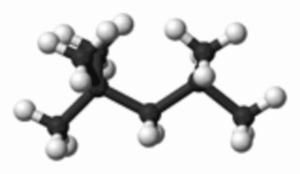2,2,4-Trimethylpentane: Product Description and Uses
Product Description
2,2,4-Trimethylpentane, also known as iso-octane, is a branched-chain alkane with the molecular formula C₈H₁₈. It is a colorless liquid with a characteristic odor and is primarily used as a reference fuel in octane rating tests. The compound is highly valued in the petroleum industry due to its high octane number, which makes it an ideal component in gasoline formulations. Its structure consists of a pentane backbone with three methyl groups attached, contributing to its branched nature and enhancing its combustion properties.
Uses
- Fuel Additive: 2,2,4-Trimethylpentane is commonly used as a standard reference fuel in octane rating tests, helping to determine the performance of gasoline.
- Solvent: It serves as a solvent in various chemical processes and formulations, particularly in the paint and coatings industry.
- Chemical Intermediate: The compound is utilized in the synthesis of other chemicals and compounds, including lubricants and plasticizers.
- Research and Development: It is often used in laboratories for research purposes, particularly in studies related to combustion and fuel efficiency.
Technical Data
| Property | Value |
|---|---|
| Chemical Formula | C₈H₁₈ |
| Molecular Weight | 114.22 g/mol |
| Boiling Point | 99.3 °C (210.7 °F) |
| Melting Point | -107.9 °C (-164.2 °F) |
| Density | 0.692 g/cm³ |
| Octane Rating | 100 (Research Octane Number) |
| Flash Point | 13 °C (55.4 °F) |
| Solubility in Water | Insoluble |
| Vapor Pressure | 25 mmHg at 20 °C |
| Appearance | Colorless liquid |
Key Features
- High Octane Rating: Essential for high-performance fuels.
- Low Toxicity: Considered safer compared to other hydrocarbons.
- Versatile Applications: Used in various industries, from automotive to chemical manufacturing.
Summary
2,2,4-Trimethylpentane is a crucial compound in the fuel industry, known for its high octane rating and versatility in applications. Its properties make it an essential component in gasoline formulations and a valuable solvent in chemical processes. Understanding its technical data and uses is vital for industries that rely on high-performance fuels and chemical intermediates.

